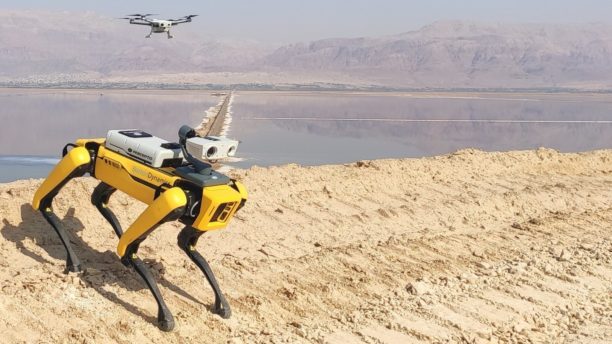Industry stakeholders highlight need for federal office, incentives, and training programs to support U.S. innovation in robotics and AI
American robotics companies are calling for a national robotics strategy to ensure the United States remains competitive in the rapidly advancing global robotics industry, according to a recently published Associated Press article.
Executives from major robotics firms—including Tesla, Boston Dynamics, and Agility Robotics—gathered on Capitol Hill this week to demonstrate their products and advocate for federal support. The push comes as China positions intelligent robotics as a national priority, significantly investing in the integration of robotics and artificial intelligence (AI).
A Renewed Robotics Race
Jeff Cardenas, CEO and co-founder of Apptronik, emphasized the historical roots of American innovation in robotics, noting that General Motors deployed the first industrial robot at a U.S. plant in 1961. However, he warned that the U.S. lost ground in subsequent decades, with Japan and Europe emerging as leaders in industrial robotics.
“The next robotics race will be powered by artificial intelligence and will be ‘anybody’s to win,’” Cardenas said in an interview quoted by the Associated Press. “I think the U.S. has a great chance of winning… But we need a national strategy if we’re going to continue to build and stay ahead.”
Industry Proposals for Federal Action
The Association for Advanced Automation, a trade group advocating for robotics and AI, argued that a national robotics strategy could help U.S. firms scale production and promote adoption. In a statement, the association warned that without government leadership, “the U.S. will not only lose the robotics race but also the AI race.”
The group proposed several policy initiatives, including:
-
Creation of a federal office dedicated to robotics development
-
Tax incentives to encourage commercial adoption of robotic systems
-
Federally-funded education and workforce training programs
-
Increased support for academic research and commercial innovation
The growing global competition, coupled with the technological advances in the sector, underscores the need for coordinated national action, the group said.
Unmanned Systems and U.S. Manufacturing
The call for a national robotics strategy is especially timely as it intersects with the ongoing debate over unmanned systems, including drones. U.S. lawmakers have intensified scrutiny of Chinese-manufactured drone technology, citing national security concerns, and are pushing to restrict its use across federal and commercial sectors. However, the U.S. is still racing to scale a strong domestic manufacturing base for drones, leaving users caught in the middle—facing limited options and higher prices for American-made alternatives. Including unmanned systems within a broader national robotics strategy could help scale production, support innovation, and provide end users with more competitive and secure options.
China’s Strategic Investment
China, already the world’s largest market for industrial robots, is making a significant push into next-generation robotics technologies. According to the Germany-based International Federation of Robotics, approximately 1.8 million robots were operating in Chinese industrial environments in 2023.
The AP reports that China has approved a $138 billion state-backed venture capital fund focused on robotics, AI, and other advanced technologies. Chinese firms like Unitree have also begun capturing public attention with humanoid robots showcased at major national events.
In an annual work report, Chinese Premier Li Qiang emphasized the country’s intent to integrate digital technologies with manufacturing, including the development of intelligent robots and connected electric vehicles.
U.S. Capabilities and Concerns
Lawmakers and industry leaders agree that the U.S. currently maintains an advantage in AI and innovation. “We need to maintain our innovation and maintain our culture of entrepreneurship,” said Rep. Raja Krishnamoorthi (D-IL).
Jonathan Chen, an engineer from Tesla’s Optimus humanoid robot project, noted that while innovation is critical, manufacturing capacity will determine which countries can scale and deploy these technologies broadly. “You create the robots, the question is who’s going to scale them?” Chen said.
Looking Ahead
Companies like Apptronik, which has backing from Nvidia and Google, are betting on humanoid robots to help engage the public and inspire the next generation of engineers. “Humanoids are going to play a big role both practically and in capturing the imagination of the public,” Cardenas said.
As robotics becomes a key battleground in technological leadership, U.S. companies and policymakers face increasing pressure to develop a cohesive national strategy that fosters innovation, scales production, and cultivates a skilled workforce
Want DRONELIFE news delivered to your inbox every weekday? Sign up here.
Read more:


Miriam McNabb is the Editor-in-Chief of DRONELIFE and CEO of JobForDrones, a professional drone services marketplace, and a fascinated observer of the emerging drone industry and the regulatory environment for drones. Miriam has penned over 3,000 articles focused on the commercial drone space and is an international speaker and recognized figure in the industry. Miriam has a degree from the University of Chicago and over 20 years of experience in high tech sales and marketing for new technologies.
For drone industry consulting or writing, Email Miriam.
TWITTER:@spaldingbarker
Subscribe to DroneLife here.


